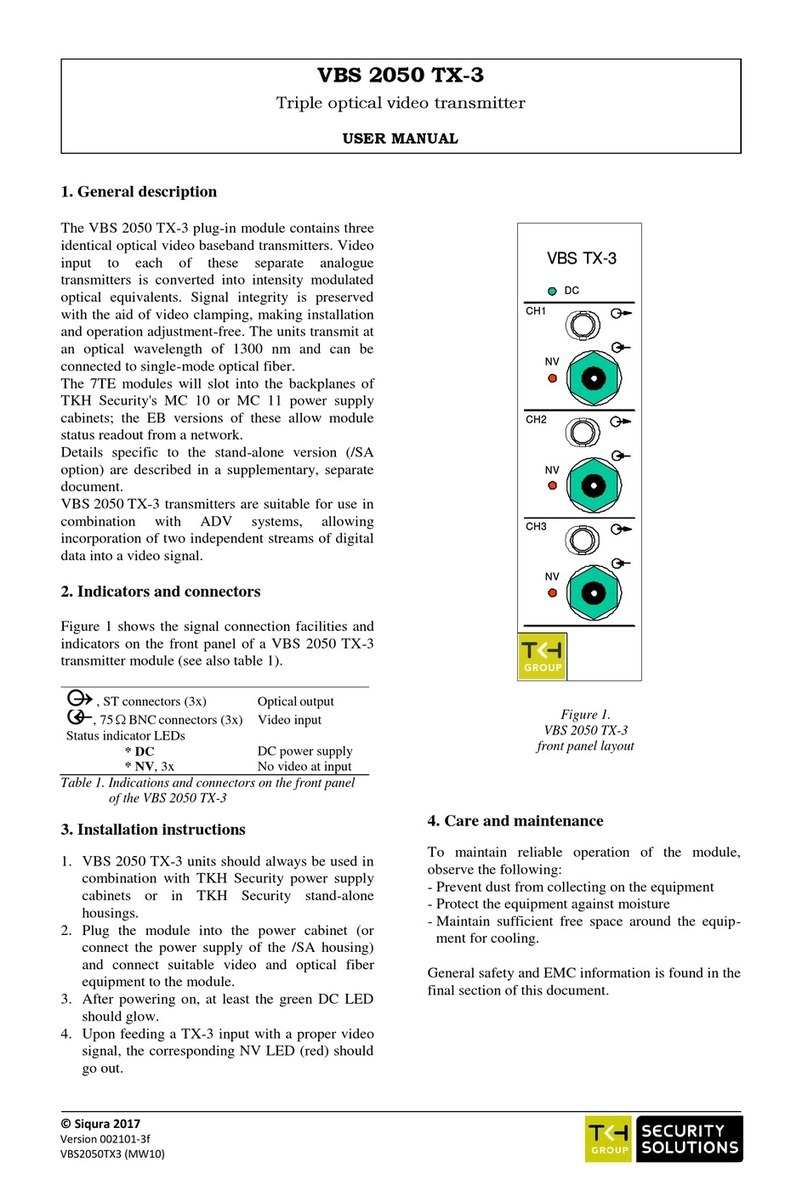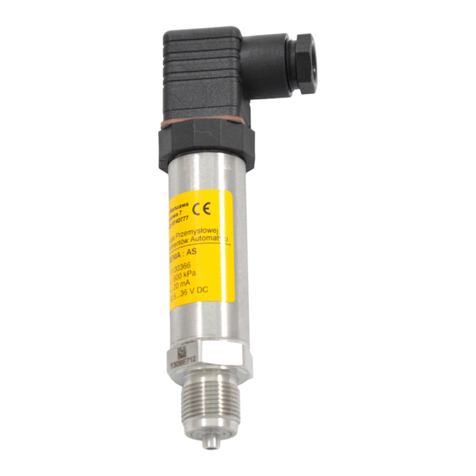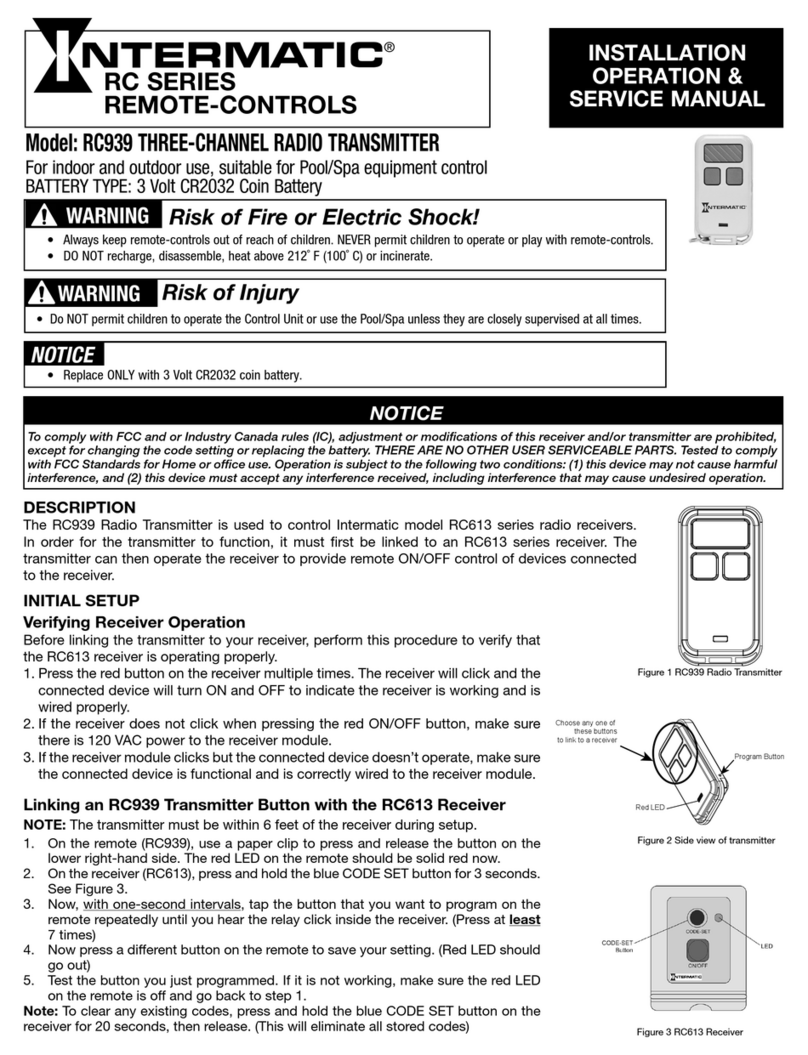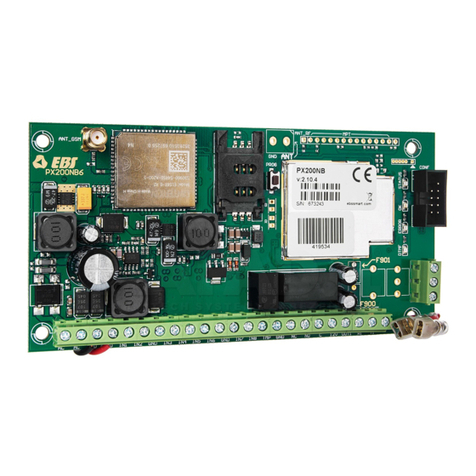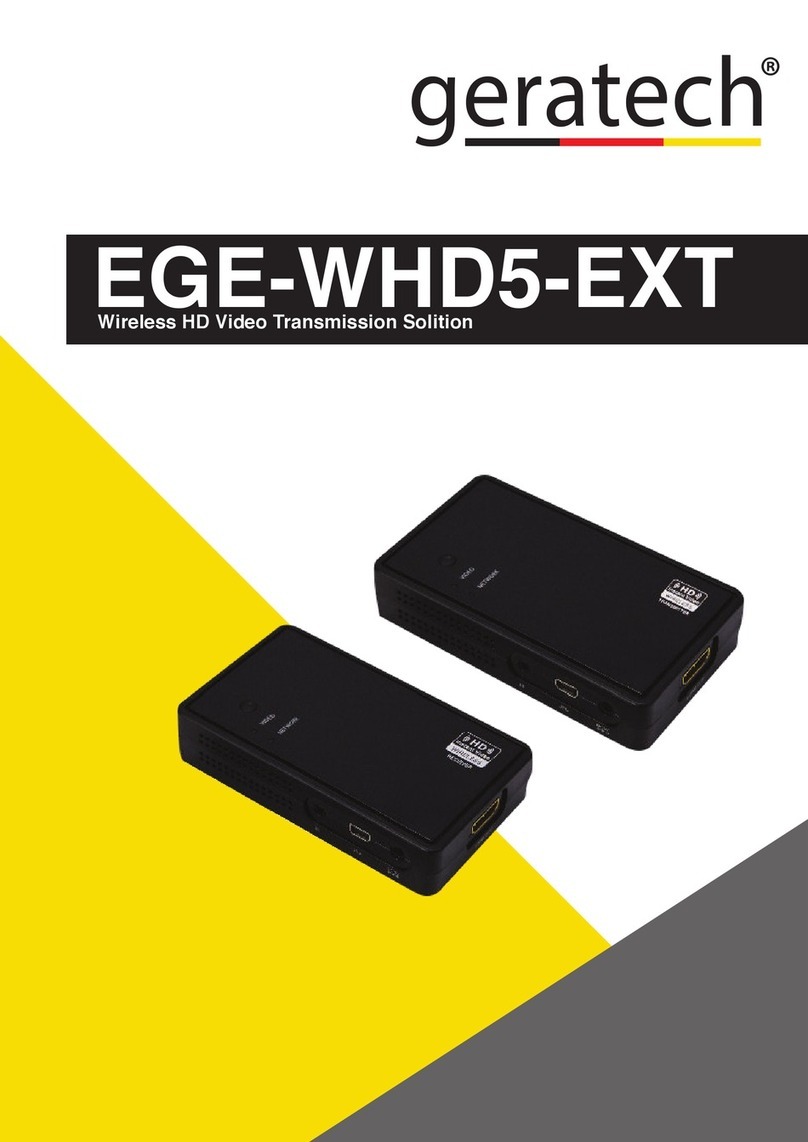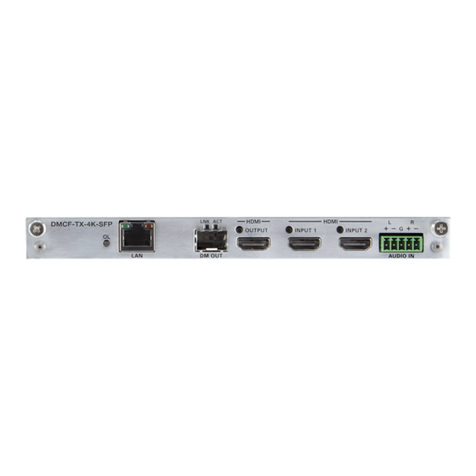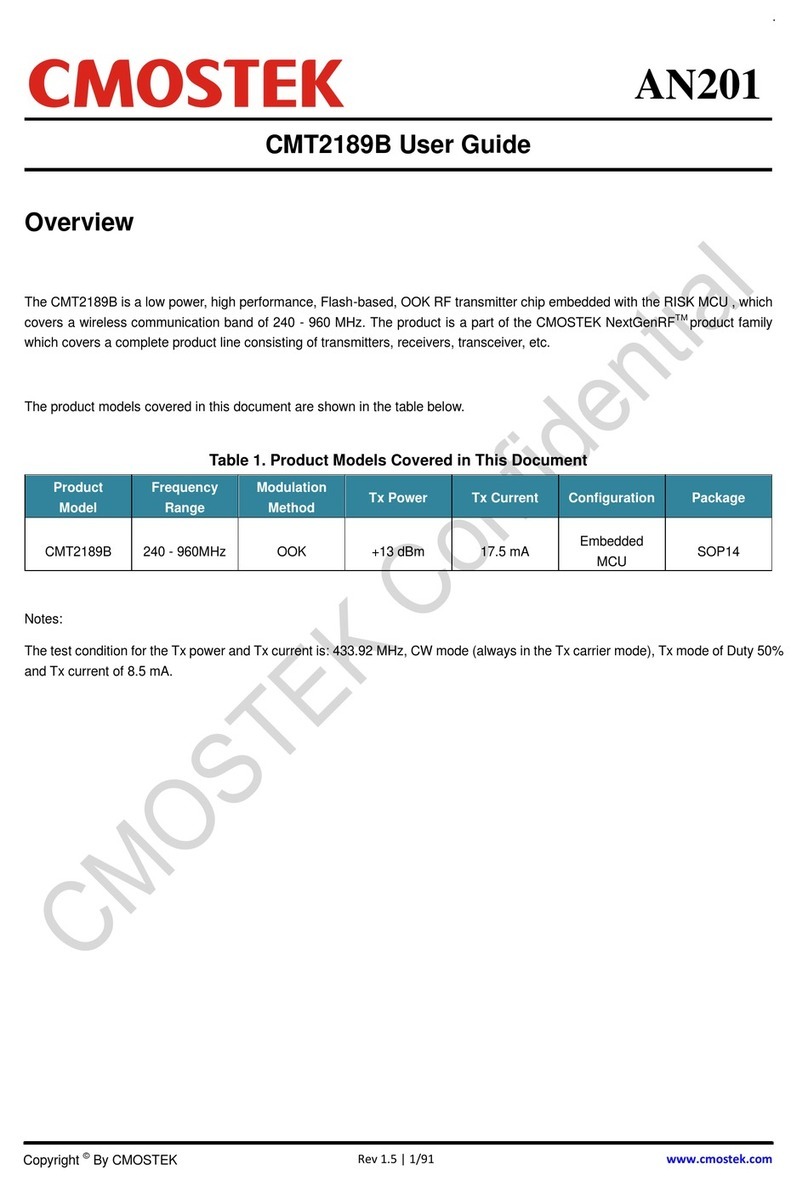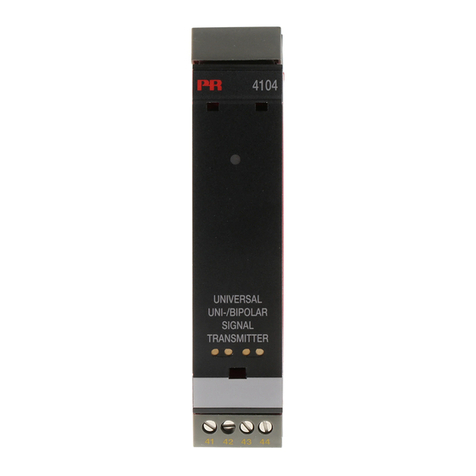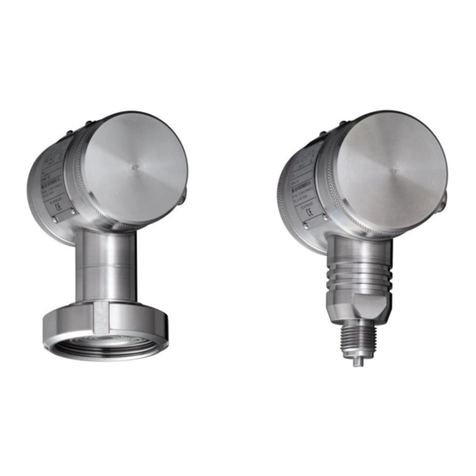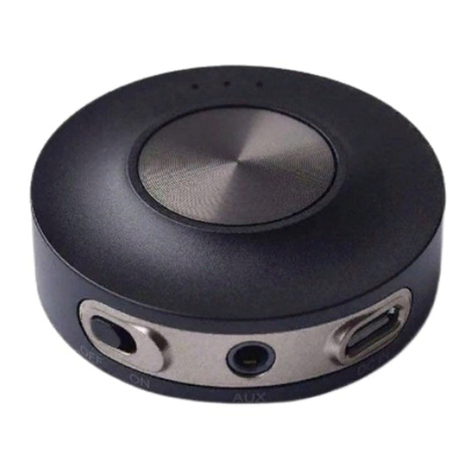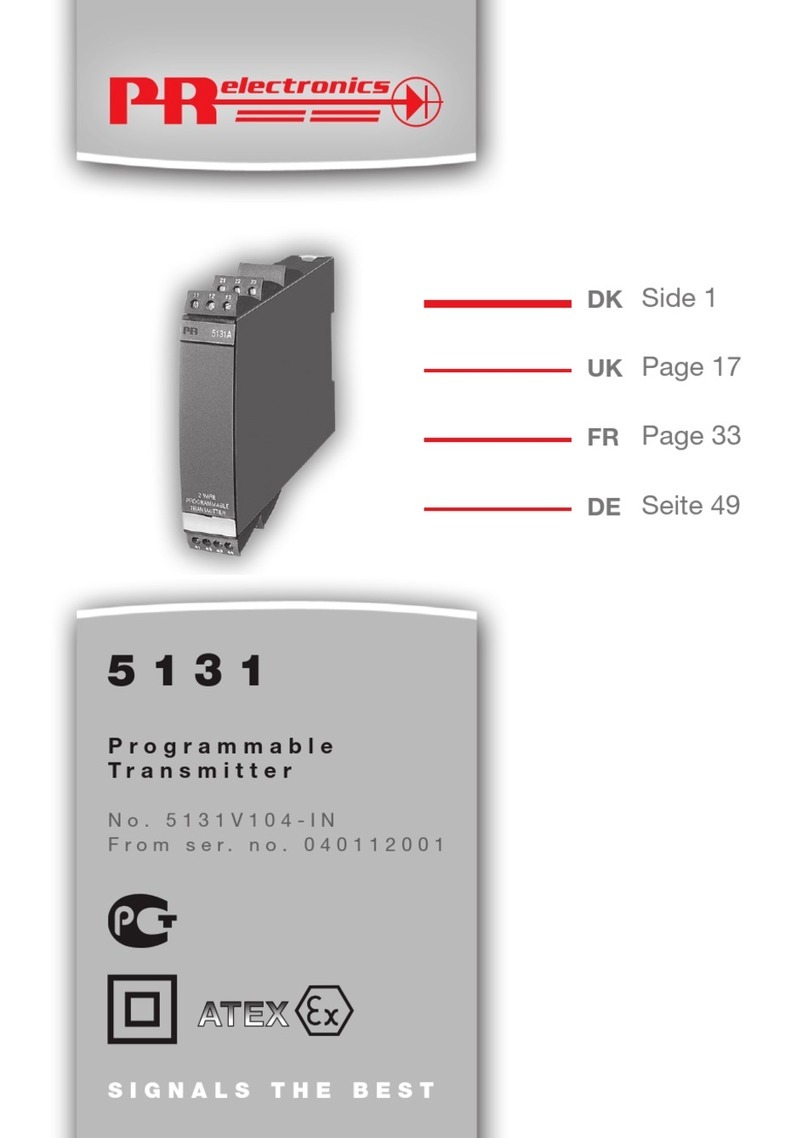Siqura UTF 4200 TX-MSA /Bilinx User manual

UTF 42xx /Bilinx Series
Optical Video/Data Transmitters/Receivers
USER MANUAL
WARNING
This is a Class A product. In a domestic environment this product may cause radio interference, in which case the user
may be required to take adequate measures. Please read section 6 of this Manual
1. General description
This user manual is valid for the following models:
Model
Description
Housing
UTF 4200 TX-MSA /Bilinx
Transmitter
2 x mm
Stand-alone
UTF 4200 RX /Bilinx
Receiver
2 x mm
Rack-mount
UTF 4200 RX-2 /Bilinx
Receiver
2 x mm
Rack-mount
UTF 4210 TX-MSA /Bilinx
Transmitter
1 x mm
Stand-alone
UTF 4210 RX /Bilinx
Receiver
1 x mm
Rack-mount
UTF 4210 RX-2 /Bilinx
Receiver
1 x mm
Rack-mount
UTF 4250 TX-MSA /Bilinx
Transmitter
1 x sm
Stand-alone
UTF 4250 RX /Bilinx
Receiver
1 x sm
Rack-mount
UTF 4250 RX-2 /Bilinx
Receiver
1 x sm
Rack-mount
UTF 42xx /Bilinx /SA
Stand-alone
Table 1. Models described in this user manual
mm = multimode fiber sm = single-mode fiber
A UTF (Up the FiberTM) transmitter (TX) converts a
composite video signal into a high-quality, 9-bit
digitised optical equivalent and transmits this over
single-mode or multimode optical fiber. All UTF
Bilinx units support the Bilinx protocol. The data
signal is to be put on the coax cable, using suitable
equipment. The bidirectional data link enables camera
control over the same, extended distances as can be
bridged with standard UTF 42xx equipment.
Additionally, the transmitter provides an independent,
voltage-free alarm contact (normally open) for door
contacts and anti-tamper contacts, for example.
Complementary UTF receivers (RX) receive and
convert the optical signal to video/contact closure.
UTF 4200 models use one transmission wavelength
(1300 nm), whereas UTF 4210 and 4250 models use
two (1310 nm and 1550 nm). RX-2 models are dual
units, each subunit capable of communicating with a
separate transmitter.
A wide range of operating temperatures makes the
stand-alone transmit ter suitable for use within outdoor
camera housings and camera connection boxes (see
datasheet).
The TX MSA miniature, stand-alone transmitter can be
powered by the camera power supply (12-24 Vdc or
24 Vac) or by a PSA/PSR 12 DC.
If 24 VAC is used, read section 3 first.
For operation under extreme environmental conditions,
the PSR 12 DC is recommended.
The UTF receivers (RX, RX-2) are designed for use in
a TKH Security MC power supply rack. The UTF
42xx/SA are the stand-alone versions of the rack-
mounted models. UTF 42xx systems are SNM
compatible.
The general connection layout is given in figure 1.
2. Indicators and connectors
Transmitters
The miniature stand-alone UTF transmitter has the
following parts, indications, and connectors (figure 2a):
1: TX: Primary optical fiber connection
2: RX (unmarked): Secondary optical fiber connec-
tion (not used in 4210 and 4250 models)
3: BNC 75 Ω connector: Composite video input
4: DC: shows SYNC: This indicator can show:
Green: Operational link
Red: Local synchronisation error
Yellow: Remote synchronisation error.
5: Mounting bracket
6: CC/GND: 2-Pin Combicon connector for alarm
contacts
7: DC 12-24 V / AC 24 V: 2-Pin power supply
connector (Combicon)
49,7
49,6
47,5
TX
VIDEO IN
DC
GND
CC
DC 12-24V
AC 24V
Up-the-Fiber™
D I G I T A L
1
2
3
5
6
7
5
4
24,5 20,5
Figure 2b. Miniature UTF transmitter (TX-MSA),
side view. Sizes in millimetres.
Figure 1. UTF general connection; data may come from camera
fiber
video
contact closure
UTF
TX cc
UTF
RX
data
video
coax coax
Figure 2a. Indicators and connectors on the miniature
UTF transmitter (TX-MSA). Sizes in millimetres.
© Siqura 2017
Version 052706-2g
UTF 42xx BX(Bilinx) (MW10)

2
Receivers
The UTF Bilinx receivers (figures 3 and 4) have the
following indications and connectors:
1. SYNC: This LED can show:
Green: Operational link
Orange: Remote synchronisation error
Red: Local synchronisation error
2. NV: This LED can show:
Red: No video on in- or output
Off: Video signal present
3. Connector for potential-free alarm contacts:
RX model : 2-pin connector (channel CC1)
RX-2 model : 4-pin connector (channel CC1
and channel CC2)
4. BNC 75 Ω connector: Composite video output
5. TX: Connection for optical fiber
6. RX : Connection for optical fiber
In one-fiber units only TX is used.
3. Configuration and installation
!Note on powering of a UTF TX-MSA with 24 Vac
from the camera !
The miniature stand-alone transmitter can convert
24 Vac power through an internal full rectifier bridge;
the "-" of its internal DC voltage is connected to the
metal housing. If the camera uses the same Vac power
supply in parallel, but with a single-sided rectifier
circuit, the UTF power supply diodes may suffer, since
there always will be a connection between the housings
through the coax cable shielding. To prevent the
occurrence of such problems, proper measures must be
taken to separate the two loads of the 24 Vac supply;
this might be preferable in any case, as a precaution.
If in doubt, please contact your distributor.
Mounting
Before mounting the miniature transmitter, the
mounting bracket has to be installed in a suitable place.
After securing the bracket, the transmitter can be
clicked into it. Make sure the transmitter is positioned
and fixed correctly.
A stand-alone receiver can be easily installed; prevent
undue bending of cabling. In case more than one
receiver is needed, use TKH Security MC 10 or MC 11
cabinets.
Powering up a system
When powering up an appropriately connected system,
the "DC” indicator on the transmitter (if suitably
powered) should show green and the "SYNC" indicator
on the receiver should also light up green. If no video
signal is present, the corresponding "NV" indicator
shows red. DC and SYNC indicators on systems not
connected will light red.
Figure 3. Indications and connectors
on a UTF Bilinx RX receiver
Figure 4. Indications and connectors
on a UTF Bilinx RX-2 receiver
RX VIDEO
RX
NV
CCI
SYNC
1
2
3
4
6
TX
5
RX-2 VIDEO
VIDEO
CH2
RX
RX
CHI
NV
NV
CCI
CC2
SYNC
1
2
3
2
4
6
6
4
SYNC
1
TX
5
5
TX

3
4. Care and maintenance
The modules are designed to be maintenance free. To
guarantee reliable operation of the units, take the
following precautions:
prevent dust from collecting on or in the
equipment;
protect the equipment against moisture;
maintain cooling space around the equipment.
5. Technical specifications
For technical specifications, please refer to the data
sheet of the relevant model.
6. Safety, EMC, ESD
General
The safety information contained in this section, and on other
pages of this manual, must be observed whenever this unit is
operated, serviced, or repaired. Failure to comply with any
precaution, warning, or instruction noted in the manual is in
violation of the standards of design, manufacture, and intended
use of the unit.
Installation, adjustment, maintenance and repair of this
equipment are to be performed by trained personnel aware of the
hazards involved. For correct and safe use of the equipment and
in order to keep the equipment in a safe condition, it is essential
that both operating and servicing personnel follow standard safety
procedures in addition to the safety precautions and warnings
specified in this manual, and that this unit be installed in locations
accessible to trained service personnel only.
Siqura assumes no liability for the customer’s failure to comply
with any of these safety requirements.
UL/IEC/EN 60950-1: General safety requirements
The equipment described in this manual has been designed
and tested according to the UL/IEC/EN 60950-1 safety
requirements.
If there is any doubt regarding the safety of the equipment, do not
put it into operation. This might be the case when the equipment
shows physical damage or is stressed beyond tolerable limits (e.g.
during storage and transportation).
Before opening the equipment, disconnect it from all power
sources. The equipment must be powered by a SELV*) power
supply.
When this unit is operated in extremely elevated temperature
conditions, it is possible for internal and external metal surfaces
to become extremely hot.
Optical safety
This optical equipment contains Class 1M lasers or LEDs and
has been designed and tested to meet IEC 60825-
1:1993+A1+A2 and IEC 60825-2:2004 safety class 1M
requirements.
Optical equipment presents potential hazards to testing and
servicing personnel owing to high levels of optical radiation.
When using magnifying optical instruments, avoid looking
directly into the output of an operating transmitter or into the end
of a fiber connected to an operating transmitter, or there will be a
risk of permanent eye damage.Precautions should be taken to
prevent exposure to optical radiation when the unit is removed
from its enclosure or when the fiber is disconnected from the
unit. The optical radiation is invisible to the eye.
Use of controls or adjustments or procedures other than those
specified herein may result in hazardous radiation exposure.
The installer is responsible for ensuring that the label depicted
below (background: yellow; border and text: black) is present in
the restricted locations where this equipment is installed.
The locations of all optical connections are listed in the
Indications and Connectors section of this manual.
Optical outputs and wavelengths are listed in the Technical
Specifications section of this manual.
EMC
Warning: Operation of this equipment in a residential
environment could cause radio interference.
This device has been tested and found to meet the CE
regulations relating to EMC and complies with the limits for a
Class A device, pursuant to Part 15 of the FCC rules.
Operation is subject to the following two conditions: (1) This
device may not cause harmful interference, and (2) This device
must accept any interference received, including interference that
may cause undesired operation. These limits are designed to
provide reasonable protection against interference to radio
communications in any installation. The equipment generates,
uses, and can radiate radio frequency energy; improper use or
special circumstances may cause interference to other equipment
or a performance decrease due to interference radiated by other
equipment. In such cases, the user will have to take appropriate
measures to reduce such interactions between this and other
equipment.
Note that the warning above does not apply to TKH Security
products which comply with the limits for a Class B device. For
product-specific details, refer to the EU Declaration of
Conformity.
Any interruption of the shielding inside or outside the equipment
could make the equipment more prone to fail EMC requirements.
To ensure EMC compliance of the equipment, use shielded cables
for all signal cables including Ethernet, such as CAT5E SF/UTP
or better, as defined in ISO IEC 11801. For power cables,
unshielded three wire cable (2p + PE) is acceptable Ensure that
all electrically connected components are carefully earthed and
protected against surges (high voltage transients caused by
switching or lightning).
ESD
Electrostatic discharge (ESD) can damage or destroy
electronic components. Proper precautions should be taken
against ESD when opening the equipment.
*) SELV: conforming to IEC 60950-1, <60 Vdc output, output voltage
galvanically isolated from mains. All power supplies or power supply
cabinets available from Siqura comply with these SELV requirements.
7. Product disposal
Recycling The unit contains valuable materials which
qualify for recycling. In the interest of protecting
the natural environment, properly recycling the
unit at the end of its service life is imperative.
8. EU Declaration of Conformity
The EU Declaration of Conformity for this product is available at
http://www.tkhsecurity.com/support-files.
Hazard Level 1M
This manual suits for next models
9
Table of contents
Other Siqura Transmitter manuals
Popular Transmitter manuals by other brands
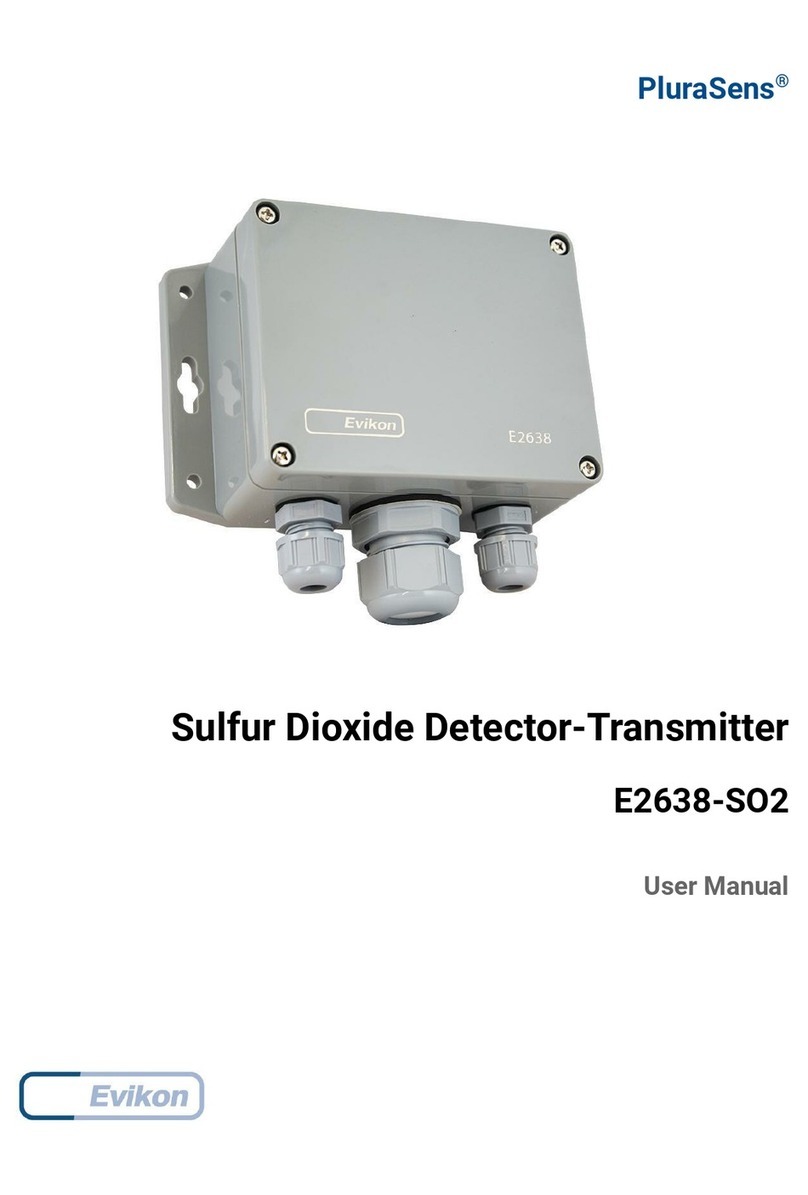
Evikon
Evikon PluraSens E2638-SO2 user manual
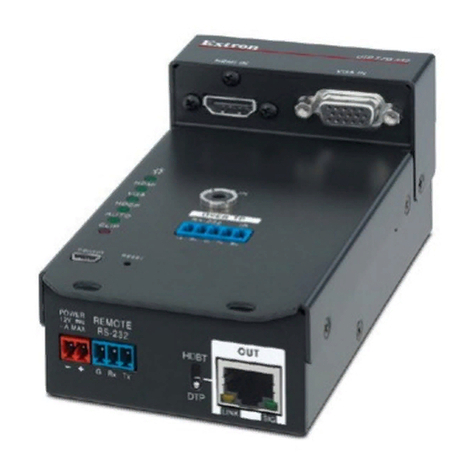
Extron electronics
Extron electronics DTP T FB 332 user guide

Brähler Systems
Brähler Systems INFRACOM ICen IV operating instructions
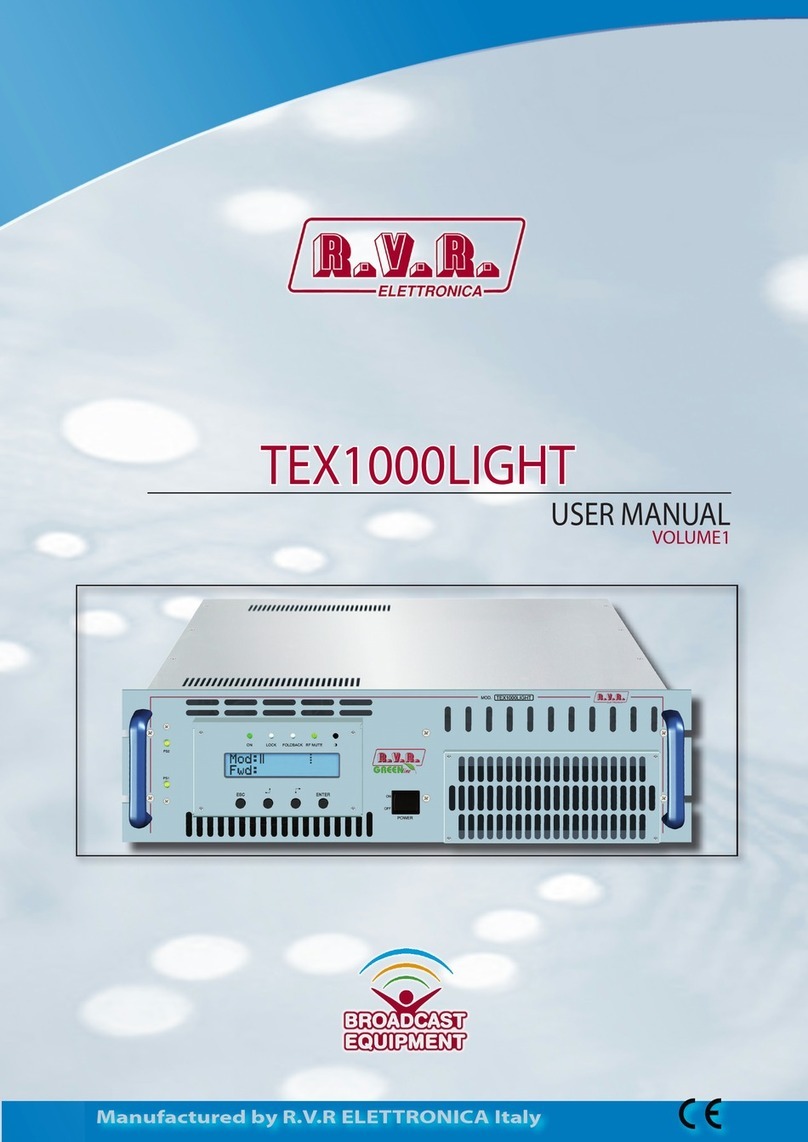
R.V.R. Elettronica
R.V.R. Elettronica TEX1000LIGHT user manual
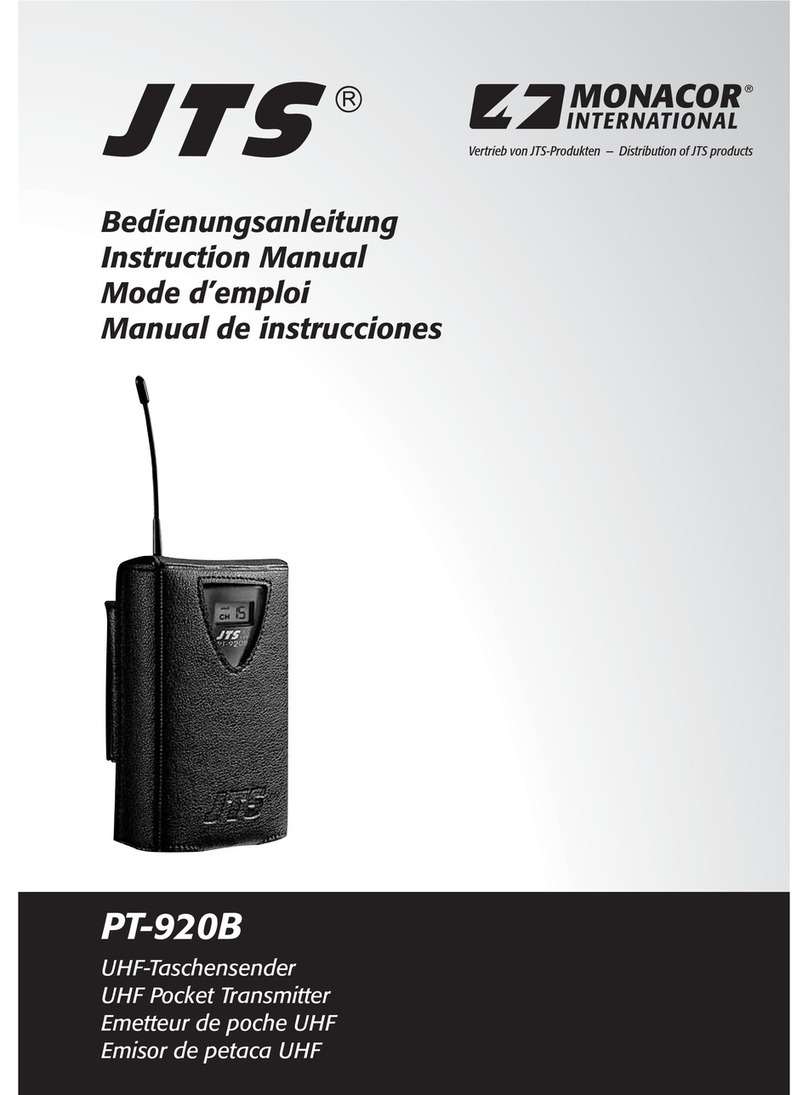
JTS
JTS PT-920B instruction manual

Kanardia
Kanardia Daqu installation manual
